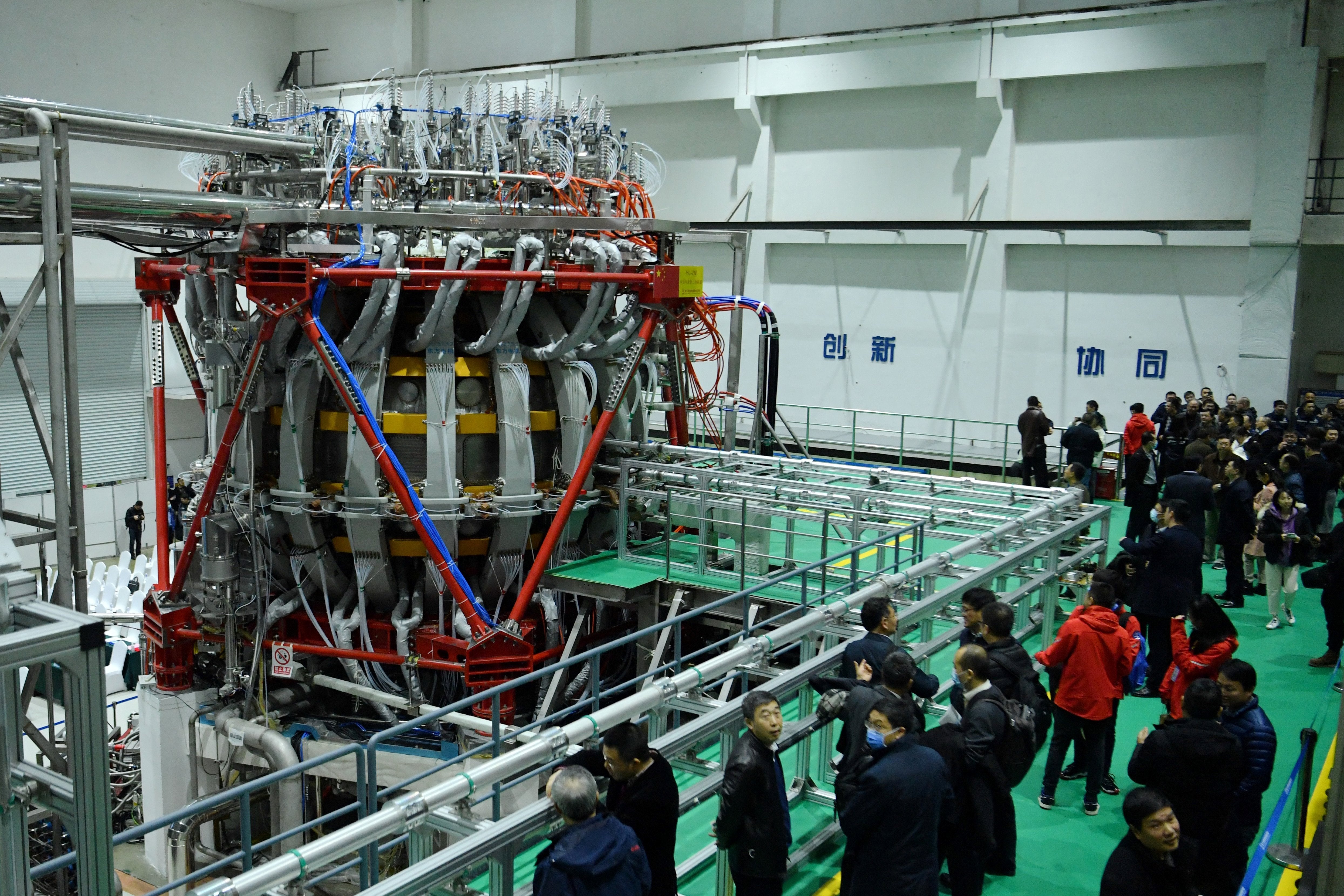Artificial sun breaks temperature world record in huge boost for nuclear fusion
Korean reactor hits 100 million degrees – six times hotter than the Sun
Scientists have achieved record breaking temperatures within an ‘artificial sun’ reactor, marking a major advance in the development of nuclear fusion energy.
The new world record saw a ball of plasma sustain a temperature of 100 million degree celsius – seven times hotter than the core of the Sun and nearly 20,000 times hotter than the surface of the Sun – for 48 seconds.
Researchers at the Korea Institute of Fusion Energy (KFE) in Daejeon, South Korea, were also able to keep the plasma stable for over 100 seconds, which is a critical element of harnessing nuclear fusion as a source of energy.
Often referred to as the ‘holy grail’ of clean energy, nuclear fusion offers the potential to provide near limitless energy by replicating the natural processes that occur within stars. It requires no finite raw materials like fossil fuels to operate, and produces no toxic waste like the nuclear fission process that powers commercial nuclear power plants.
The KFE team said the key to the breakthrough was using tungsten as one of the components, which is able to handle significantly greater heat loads. They now hope to build on the latest success by achieving the team’s ultimate goal of sustaining plasma at 100 million degrees for 300 seconds in order to build the world’s first fusion demonstration reactor.
“This research is a green light for acquiring core technologies required for the fusion DEMO reactor,” said KFE President Suk Jae Yoo.
“We will do our best to secure core technologies essential for the operation of ITER and the construction of the future DEMO reactors.”
The research was published in the journal Nature Communications in a study titled ‘Tailoring tokamak error fields to control plasma instabilities and transport’.

It is one of several major efforts around the world to generate and contain plasma for the purpose of eventually producing electricity through nuclear fusion.
In April last year, China’s Experimental Advanced Superconducting Tokamak (EAST) reactor sustained plasma for 403 seconds, though it was achieved at lower temperatures than KFE.
The UK is also conducting experiments with nuclear fusion and aims to build a power station as part of its “green industrial revolution”. The Spherical Tokamak for Energy Production (STEP) project launched in 2019, aiming to have a commercial reactor constructed by 2040.
Join our commenting forum
Join thought-provoking conversations, follow other Independent readers and see their replies
Comments
Bookmark popover
Removed from bookmarks